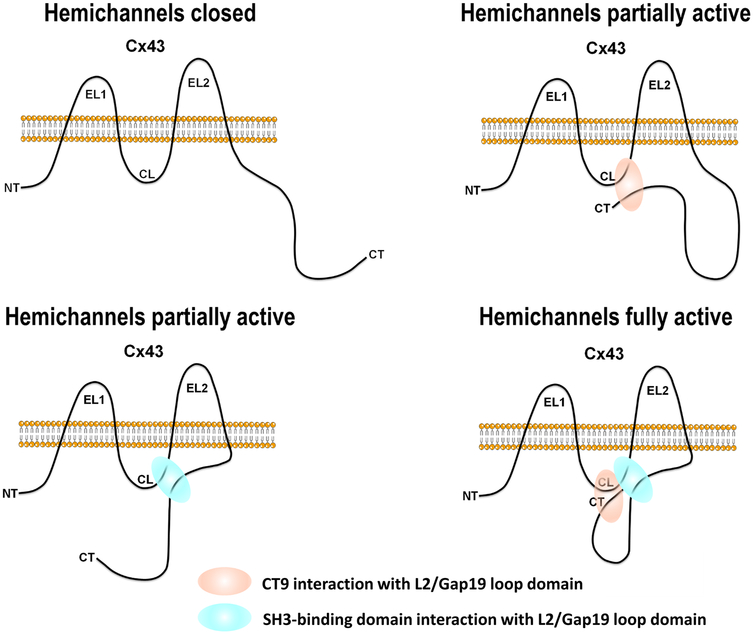Fig. 8.
Model for the regulation of Cx43-hemichannels by the two different CT regions. The panels represent one subunit of a hexameric Cx43-hemichannel. Two regions within the CT of Cx43 are important to establish fully active hemichannels in response to channel-opening triggers such as lowering [Ca2+]e or moderately elevating [Ca2+]i. Cx43-hemichannels that cannot establish CT/CL interactions, e.g., by lacking the CT9 region and the SH3-binding domain (upper left), remain closed. Cx43-hemichannelsthat can only establish CT/CL interactions with one of the two domains, e.g., by lacking the SH3-binding domain (upper right) or the CT9 region (lower left), are partially active. Cx43-hemichannels that can engage both the CT9 region and the SH3-binding domain to interact with the CL are fully active (lower right)

